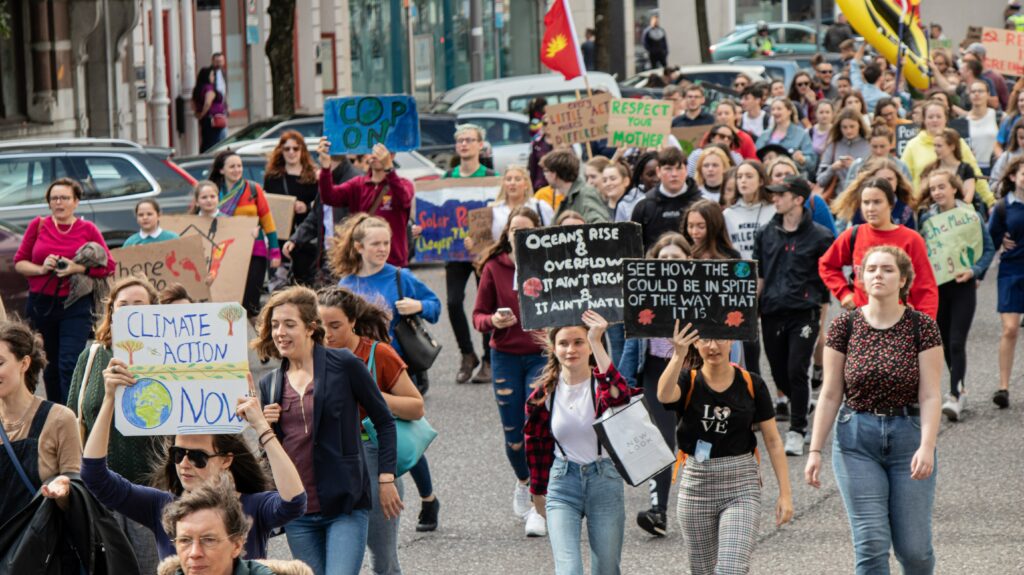Are roses for Valentine’s Day the ultimate symbol we really don’t care?
Without gender equality today, a sustainable future, and an equal future, remains beyond our reach.
UN Women
Striving for a fairer, more sustainable planet is central to what we do at Live Frankly. Campaigning for sustainability isn’t just about demanding a better world for the benefit of the environment. It’s about demanding a fairer world for people, too.
Often, the same industries and corporations abusing the environment are abusing people, too – particularly vulnerable people in lower-income countries.
These countries are also the most impacted by environmental degradation and climate change:
“The poorest half of the global population are responsible for only around 10% of global emissions yet live overwhelmingly in the countries most vulnerable to climate change.” [Oxfam]
And of those who are being hardest hit, women make up a shocking 80% of the people displaced by climate change. [1].
According to the UN, women are more vulnerable to climate change impacts than men. This is because they constitute the majority of the world’s poor. Also, where women are seen as the primary caregivers responsible for providing household food, water and fuel, they are more dependent on the natural resources that climate change threatens the most. [2]
International Women’s Day: Women at risk
- In developing countries, women are exposed to risks of death and injury due to increasingly dangerous weather. [3]
- Every year, two million women and children die prematurely due to illness caused by indoor air pollution. The primary cause is the use of unclean energy for cooking and heating in households. [3, 4]
- More than 70% of people who died in the 2004 Asian tsunami were women. This is because of various socio-cultural differences. For instance, many women stayed behind to look for their children and other relatives. Also, men more often than women can swim and climb trees. [4]
- The climate crisis will most affect those with limited access to land, resources or the means to support themselves. Women face discrimination in accessing land, financial services, social capital and technology. While globally 39% of employed women are working in agriculture, forestry and fisheries, only 14% of agricultural landholders are women. [5]
- 40% of countries have at least one restriction to women’s rights to property. Insecure land rights make women especially vulnerable to land-grabbing for large scale environmental projects. [3]

International Women’s Day: Women as changemakers
“Continuing to examine the opportunities, as well as the constraints, to empower women and girls to have a voice and be equal players in decision-making related to climate change and sustainability is essential for sustainable development and greater gender equality. Without gender equality today, a sustainable future, and an equal future, remains beyond our reach.”
UN [2]
While women are clear victims of the climate crisis, they are also powerful changemakers in the fight for climate action.
Celebrating the contributions of women and girls around the world in building a more sustainable future for all, UN Women chose the theme, “Gender equality today for a sustainable tomorrow,” for 2022’s International Women’s Day, recognising the key role women have to play in achieving climate justice.
Evidence from 25 developed and developing countries suggests countries with higher female parliamentary representation are more likely to set aside protected land areas. [6]
Female representation in national parliaments leads to more stringent climate change policies across countries. By doing so, it results in lower carbon dioxide emissions. [7]
Women’s behaviour as investors also shows that they on average are more concerned about climate change than men. Female investors are more than twice as likely as their male counterparts to say it is important for the companies they invest in to integrate ESG (Environmental, Social, and Governance) factors into their policies and decisions. [8]
Yet, we continue to deny women input in climate policy-making. 67% of decision making roles about climate worldwide remain occupied by (mostly white) men. [5]
Ultimately, prevailing oppressive and discriminatory social, economic and cultural gender norms means that we are yet to realise the full potential of what women can contribute to this area.
REFERENCES
[1] UN News, Women bear the brunt of the climate crisis, COP26 highlights
[2] UN Women, International Women’s Day 2022: “Gender equality today for a sustainable tomorrow”
[3] UN Women report, “Beyond COVID-19: A Feminist Plan for Sustainability and Social Justice”, p.50
[4] UNDP Linkages Gender and CC Policy Brief, p.5
[5] UN Women, Gender equality women’s rights in review p.23
[6] UN Women, Facts and Figures
[7] Astghik Mavisakalyan and Yashar Tarverdi, “Gender and climate change: Do female parliamentarians make difference?”, p.16
[8] Oliver Wyman Forum, Diversity Climate report, p.13


